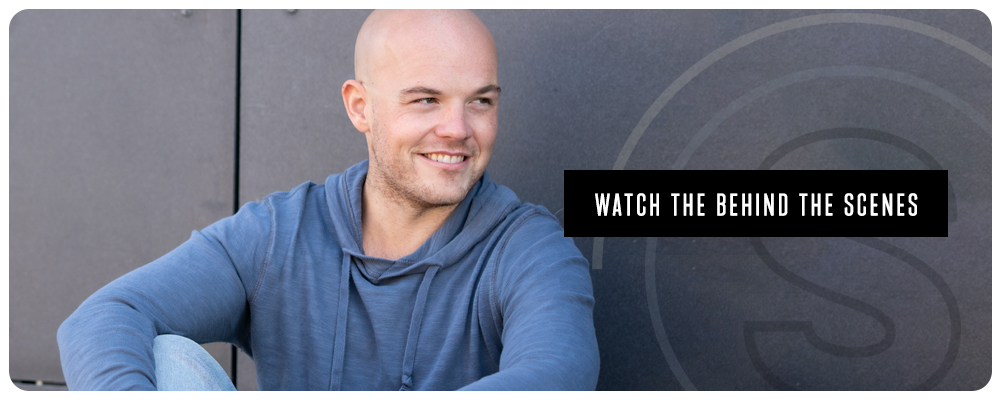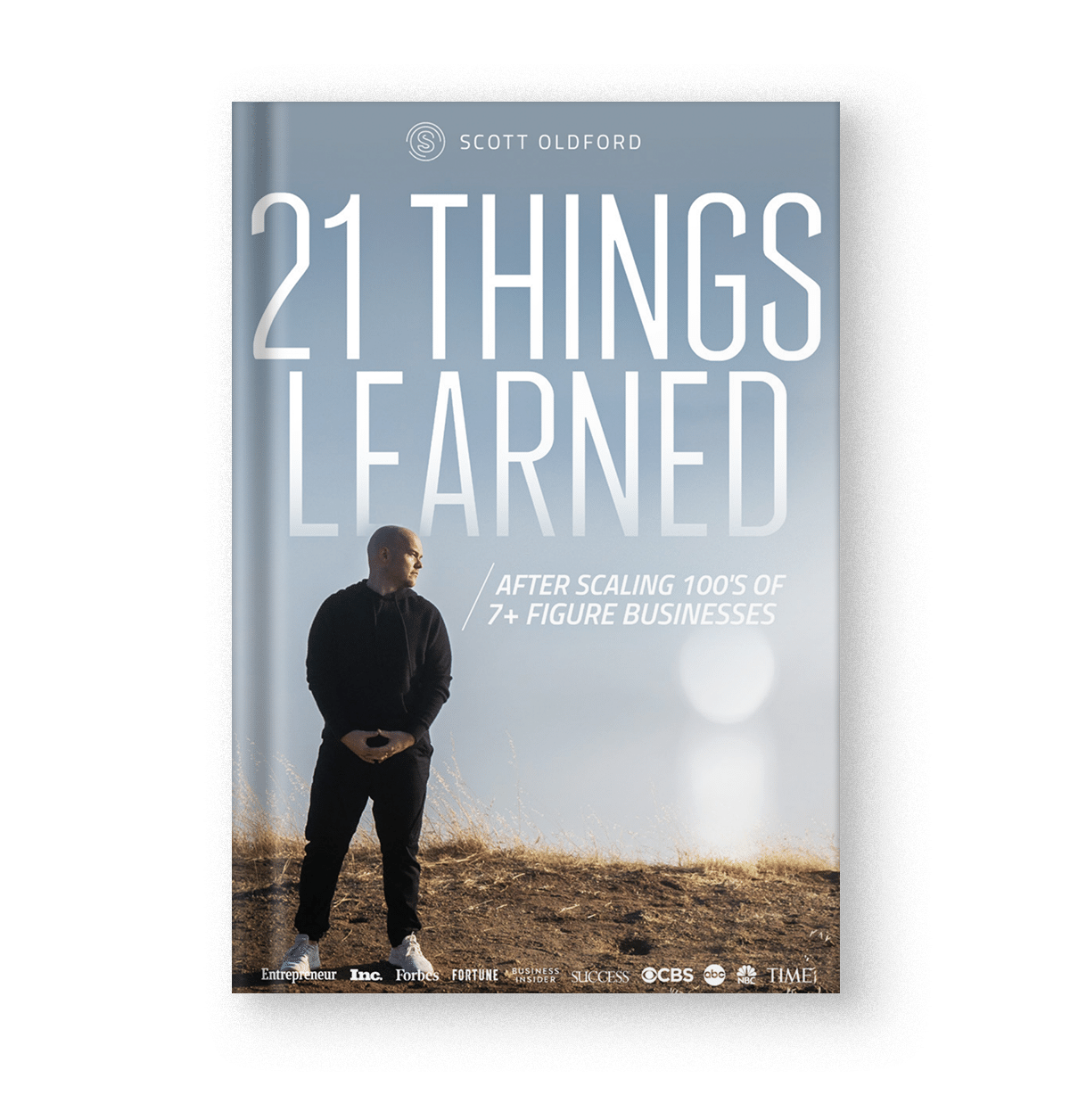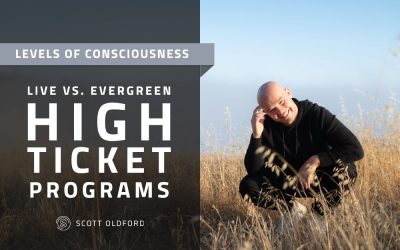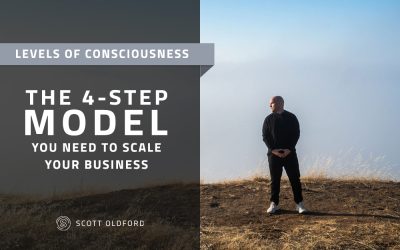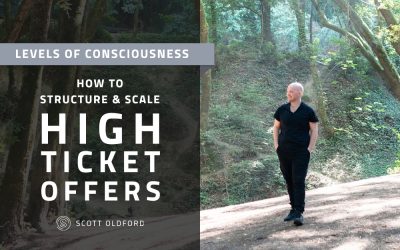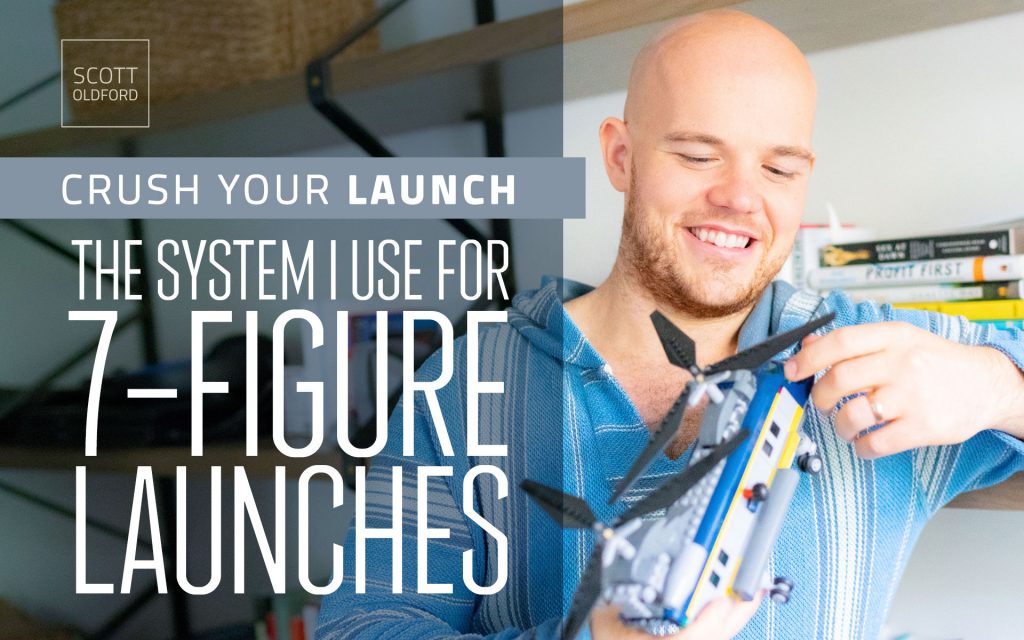
Believe it or not…
I’m a huge believer in having evergreen systems to bring you revenue… And that’s what most entrepreneurs come to me to help them with.
But adding launches on top of that is going to help you scale your business faster.
But the problem is that launches can be stressful, and you may end up with disappointing results.
Many experts make it look like launches are very complicated… according to them, if you don’t do it the “complex” way, your launch will fail.
But let me tell you, I made over 8 figures in the past few years from online launches.
I’ve planned a couple of hundred-million-dollar launches.
And I’ve learned a lot about launches over the years.
So in this post, you’re going to discover the simple stuff that’s going to help you crush your launch.
There isn’t necessarily any groundbreaking stuff here. You’ll discover the essentials that worked for me and the hundreds of entrepreneurs that I mentor.
If you prefer watching a video, here is a 30-min masterclass of me walking through the process of how to crush your launches…
But before we get into what you should do, I want to start with…
Why Should You Launch (and When)?
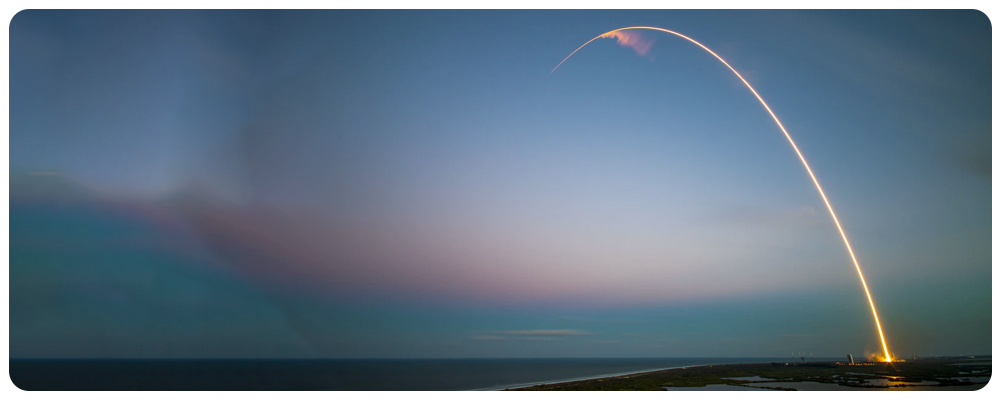
While it’s true that I like evergreen marketing…
Launches are very important to use in your business.
It’s hard to depend exclusively on evergreen marketing, especially when you’re in the beginning stages and haven’t passed seven figures yet.
I would still recommend that you do launches after hitting seven figures, but they’ll be less important than your evergreen systems at that point.
So why all the hype about launching even though I’m more of an evergreen guy?
The first reason is…
Validate a new offer/product much, much faster.
Doing a launch to validate your offer will help you test, see where the problems are, and most importantly, generate some good cash that you can invest in your business to get sales on your evergreen stuff.
I previously talked about validating your offer in this post.
Increase Lifetime Value
Evergreen is great to get sales consistently, but not everyone is going to buy right away.
That’s why presenting them with a launch every quarter or so where you give them more content and show your relevancy (and maybe tweak your offerings) is the best way to increase the lifetime value of every person who comes to your business.
This is how you create the waterfall effect where people who subscribed six months ago may purchase now.
After you test them and know that they work, you can turn those funnels evergreen, stack them on your other funnels, and your evergreen system will now generate more revenue for you. So it’s a win-win situation.
This brings me to the next point and that is to…
Test a new funnel
You know your offer works, but you want to develop a better Fast Lane funnel to get people to move from the Slow Lane to the Fast Lane and be a customer.
The best way to test that funnel is to do a full launch.
Doing a full launch after you build your funnel is a great way to get data and see what works and what doesn’t before you turn it evergreen.
Maybe you have a tech problem… your current people are going to forgive you more than strangers, so this is the place to test things.
And the most important thing of all is…
Get a Cash Injection
Getting that cash injection from people who buy that are already on your list (or even if they’re new) is important to scale your business faster.
Growing with evergreen is a little bit more linear, but when you combine that with launches, it helps you increase the curve even more, which is how you scale your business faster.
You could use that money to invest it in your ads, hire new people, or invest it in any area of your business, like hiring a mentor…
And that’s when you see exponential growth in your business.
A Fair Warning About Launches
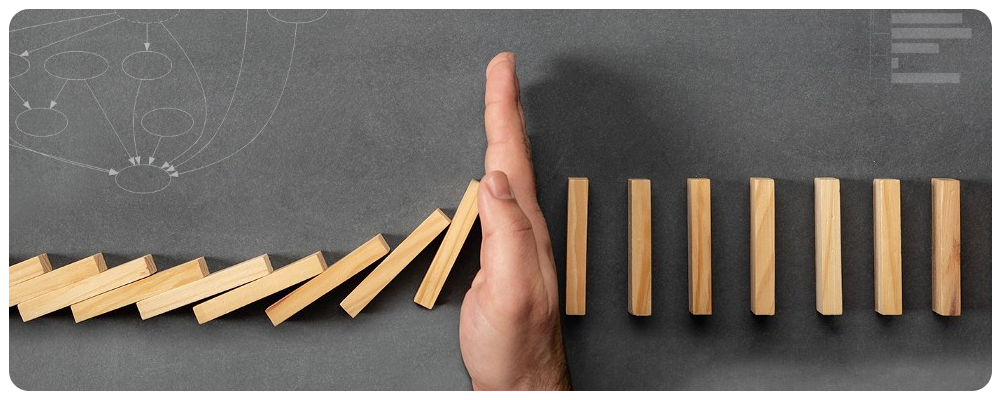
Before continuing with launches, I want to warn you that depending on launches alone isn’t the ideal way to grow your business.
I know many entrepreneurs get addicted to launches and they forget the evergreen system, which makes you have those high and low months where you’re on a rollercoaster between marketing and delivering your product.
Yes, many people are doing well with that model…
But why not have that base revenue that you could build on using launches so you don’t have to worry about leads in your business?
Operating your business this way will be much more fun and fulfilling… trust me.
With that out of the way, let’s get into the juicy stuff.
If you would like to see behind-the-scenes content of me launching a new low-ticket workshop and how I used it to get sales for my high-end offer, click here to get access.
You’ll watch me as I do every step, and then you’ll see the results and what happened in the end.
Structuring Your Launch
Doing a full launch can be as easy or as hard as you want it to be.
In this post, you’re going to discover the main structure of my main launch, from what I do before I even promote the launch to turning it evergreen so you can generate more sales during the launch…
And most importantly, you’re going to learn how to generate sales over and over.
Sometimes when I plan my launch, I go through some of these steps/phases quickly, and sometimes I make them more intensive or a little bit complex.
My suggestion to you is to test the water and not overwhelm yourself, at least at the beginning, then hire people and execute bigger launches.
Let’s get into the phases. It all starts with…
Stage #1: Building Hype + Context
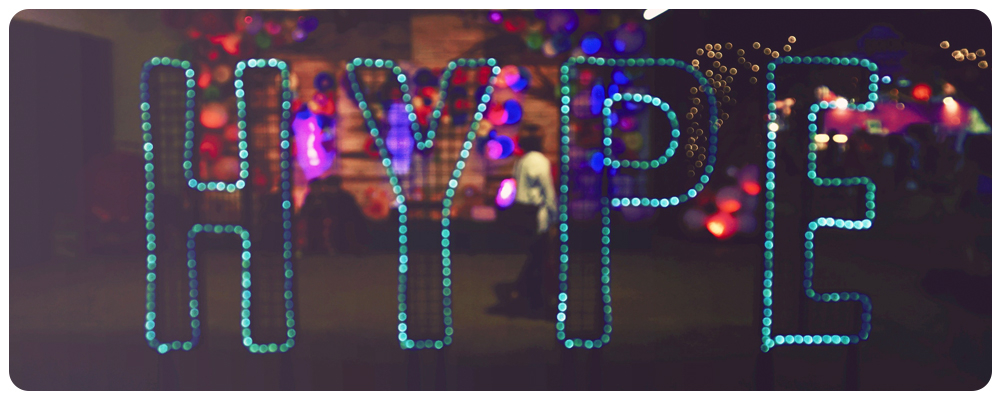
Before you start promoting the event, you need to provide people with context and build hype about what’s coming, because it’s our job as marketers to guide attention.
And your job before launch is to guide the attention of people who are already listening toward the launch that’s coming up.
So, what should you do in this period?
You’ll essentially create content that helps you guide that attention and make people look forward to the launch with bated breath.
The types of content that I’ve found to work best during this period are:
- Pain/Problem
- Method/Process
- Authority/Value
- Proof
- Lifestyle
- Belief
- Ask
- Invite
These content types are self-explanatory, and I talk more in-depth about them in the Create Content That Sells post.
But basically, you’re affirming someone’s pain, showing them your method/process, providing value and showcasing your authority, demonstrating that it works and that you are an authority using proof, sharing lifestyle content to showcase their vision and what could finally happen after they solve that pain, and describing your beliefs and getting them to resonate with it.
Then, you’re going to ask them if they want that content that you’re launching, “building hype,” and then you invite them to check out that challenge or webinar or whatever you’re creating.
That is, in a nutshell, the types of content to create and why they’re important. It seems logical, right?
So what you do now is you start building that hype through the different channels that you have.
For organic hype, you need to begin fourteen to twenty-eight days before your launch and you start sharing the above content through your emails, blog, social media accounts, and especially your Facebook group, YouTube channel, and so on…
So you’re building hype organically for free through whatever medium you’re using.
After that, you do paid hype, which is essentially your omnipresence to those same people.
People already know you if they’ve been following you for some time, so you just need to recontextualize them, confirm the lane they’re in, and move them to the Fast Lane using the right content. You do this for 7-14 days.
There is not necessarily a call to action in your ads; you’re just providing content to give that context and build hype, then you invite people to what you’re going to do after you’ve provided enough context.
This will cost you some money, but it’s an amplifier and it ensures that you get people to contextualize what you’re doing before you get them into your launch.
You could also do partner hype, where you appear on a podcast or whatever platform/format you use to get more people into your funnel.
The best thing to do is to do it quite some time before your event promotion, so I suggest you do it sixty days before in most cases, or at the very least, 14 days before.
That way, the people who resonate with what you say will get to your site/business and then have time to get organic and paid hype to understand the context for what you do.
Again, there’s no pitching in this period.
You’re just giving free high-quality content so you can essentially create a moral gap. What I mean by that is that when someone does a favor for you, you feel obligated to return the favor, and you’re doing this by providing people with good value so that they’ll give you more attention…
Where attention goes, money flows afterward.
Now that you’ve created this moral gap, you’re ready to promote the event.
Promotion of the Event
The event could be any type of event. It could be a book, challenge, webinar, video series, or even a paid workshop, as I’ve been doing with my recent launches.
Choosing the right one depends on what you want to do and what will give your people the right context for your offer. But most types of events are good for a wide variety of purposes, so don’t overthink it.
Just pick one and go with it.
When you’re promoting the event in the period before the event you want to take people off social media and get them to your email list.
You want to own the list. So you send people to register via a landing page to your lead magnet.
You also want to build intimacy, community, and connection so you can start conversations more easily, and there’s no easier way to do that than creating a Facebook group.
I usually send people to my Facebook group from the thank you page and in the email sequence after that. You can send them to a new group or you can send them to your free group that already exists.
Usually, for most of my launches, I send them to the group that I already created.
If they paid for something, then they’re in a separate group.
You’ll then start creating daily emails until the event. Nothing fancy.
You can just send people to old content you created, posts from popular magazines, or give them a piece of content and tell them that you’re excited to go more in-depth into this topic, and so on.
This is to give more context and build the hype as well. You can also post that content in the Facebook group, so the people who didn’t sign up will hopefully see the value and thus register to your email list.
In this period, you also need to reinforce the purpose of why they should give you their attention and attend that webinar or challenge or whatever you’re creating. This goes back to the content and talking about the why.
People have a lot of things to do, so you need to convince them that this is worth their time.
And the call to action in this period is very simple. You ask them to refer people to the challenge or the workshop and you ask them to listen to what you’re saying in the group/email.
You can do this by always opening loops and making them curious so they look forward to the next email/post.
So, what is the timeline for this period?
In this phase where you’re promoting the event for organic traffic:
You want to have seven to ten days after the end of the hype phase where you share organic content twice per day and give them a call to action to join your list, refer people, and listen to what you say.
Again, you need to use all the social platforms and all the sources that you can to send people to the new landing page.
For paid traffic:
You start four to seven days before the event and you show people five to ten ads giving people the landing page link and telling them why they should give you their attention during that event.
For partner traffic:
If you have someone who will promote you as a joint venture, where they interview you and then send people links about the event, you don’t want them to send emails earlier than seven days before the event.
Four days is even better.
If you promote it any earlier than that, people won’t even remember why they registered, and of course, you get those people to get a piece of content right away to trust you, like your Slow Lane lead magnet, and of course, send them to your Facebook group, and share content with them to reinforce their beliefs.
During the Event
During the actual event, you need to email people more often.
You’ll start emailing them one to three times every day, post on the Facebook group two to four times a day, and keep talking about the event: tell them that it’s starting, share case studies, and so on.
In this period, you’ll share the following content types:
- Authority
- Method
- Proof
- Lifestyle
- Ask
You always want their attention, and you want to guide it towards checking out the event, why you’re the person to listen to, proof, your methodology, and so on.
As for the content of the event, you should already know what you’re going to create, because you already have a complete framework to follow.
The important part is that you’ll get people to see their pain/problem, show them their vision, show them the gap, and then the commitment they need to have to close that gap and achieve the vision. Yep, this is very similar to the 4-step close system I shared in this post.
Sales Sequence
Now that you’re done with the event, you’re going to send people through a sales sequence to get them to finally make that commitment…
Whether that means sending them an application form or directing them to a sales page where they’re going to see the details of the products and purchase right away.
Usually, this sales sequence period lasts between five to ten days.
In organic channels, you’ll post twice per day. Fifty percent of the content is value content and in the other 50%, you’re giving them a call to action. The content types you’ll use in this period are:
- Proof
- Solution
- Objection
- Vision
- Authority
Remember, your sequence shouldn’t be saying “Go purchase this now.”
It should be more along the lines of “Seven ways how I helped this person achieve their vision, how my solution helped them, and how it could help you, too.”
The main topics to cover in this period should be:
- You’re the right person to help them
- Why they need to trust themselves
- This will work for them because it worked for others, even though they’ve tried other “solutions”
- Now is the time to take action, make the commitment, and achieve that vision
- Life afterward (vision)
For paid channels, you’ll do the same thing, giving them 50% value and 50% CTA content.
You will create ten to twenty ads to show in this period.
Usually, I like to focus more on retargeting people who previously showed interest in the offer. This means they visited the sales page but didn’t purchase, or people who visited the application form page but didn’t submit the application, and so on.
Giving them more value will make it more like you’re inviting them to an opportunity and not trying to pitch your product. This is the main thing you’re doing in this sequence.
In the Last Forty-Eight Hours:
This is very important and this is actually where I make 60% of my sales. I know it may be shocking, but you need to show two to four times more content in this period.
Yes, it’ll be a little bit annoying, but this is when you make the sales. Again, you’re not pitching to them directly, but you’re giving them value, telling them why they should check out this content even if they don’t buy it, and basically using the same content types listed above, but with more frequency.
You’ll also need to accelerate your ad spend. During this period I’ll go to Facebook and the other platforms I use and increase bidding because I don’t care how much they take as long as they show my content to people.
You can also do a live stream and Q&A where you answer questions, provide value, and build more intimacy.
Another thing I highly recommend you do is live chat/texting.
Let people know that you’re available and make it easy for them to chat with you and create conversations. Maybe they need that connection.
Now you can develop your ultra-relevancy by making your message specific to them. For example, you could share a specific case study of a person that you helped before. Check the social selling post to know what to do here.
Again, it’s about providing more value and not just selling your product.
And this concludes your sale sequence where you get 60% of your sales, but you’re not done yet.
Downsell Sequence
Now you’re done selling your product, but you can’t let all that momentum go to waste.
The problem is that people usually do the downsell the wrong way. They take a random product that has nothing to do with what they’re selling and they try to downsell it to people just because it’s a lower-priced product.
That doesn’t work.
For me, for example, when I was promoting my mentorship and asking people to apply, my downsell was my course, which was $997 or twelve payments of $97.
It was a highly relevant product but at a lower cost.
Some people take part of their product that is super relevant and sell it as a lower-price course. That’s a great way to give people value and generate some revenue from people who weren’t going to purchase the big item anyway.
Also, it will make them see the value you provide and how you’re the relevant option, which makes them more willing to purchase from you in the future.
Another option that you could do is to offer a payment plan for your product. It’s a common business practice, and you don’t have to do a lot on your end to make it work.
You just create a new checkout page that has a longer payment plan. I’ve found that getting people to sign up for my course for twelve payments of $97 is more effective than one payment of $997.
So that’s an easy thing you could do.
The downsell phase should take three days.
It shouldn’t be longer because by that period they’ll have already made up their mind that they won’t take you up on this opportunity this time.
In this period, you post double organic, and of course, you do accelerated bidding. You need to create the ads beforehand so they’re approved, which will allow you to hit the ground running.
Another great thing you can do that is super effective is to do outreach to the people who showed the most interest but didn’t purchase.
Usually, those are people who checked the checkout page, or stayed for x amount of time on your sales page, or stayed for most or all of the webinar.
You can do it manually or send it directly from your autoresponder software.
But the best option is to use a tool that can automate sending this email from your personal account so it hits their primary inbox and gets high deliverability and initiates conversations, which may be what you need to get those sales.
Nurturing Sequence
Now you’re done with your launch and sales process. Usually, you shouldn’t launch again until eight weeks have passed.
Three months is a better option.
In this period, you should return back to your normal organic and nurturing sequence so that you still build goodwill and get people who were in the Slow Lane to be more aware of your method and build your trust and authority.
Maybe the timing wasn’t perfect for them last time.
You need to build goodwill so that when it aligns with them, they take it. You don’t want people to unsubscribe because you only offer content during your launch.
In this period, you do organic posts four times per week.
Return to your normal omnipresence stack and add the new content to it if it does well. The content should be 100% value in this period.
While you’re flooding them with great content to build that goodwill, you could also ask them for their feedback on why they didn’t purchase.
This will give you great insights into where you can improve.
It’ll also create conversations and strengthen the connection so your intimacy increases, which will make it easier to get them enrolled when you present them with the next opportunity.
Turn It Evergreen
You already know that I like evergreen.
You have the data and you know what works and what doesn’t. You start tweaking the funnel accordingly so you can make it evergreen.
Don’t look for short-term gains; instead, focus on the waterfall effect.
So the first step is that you do the optimization and tweaking to make it run on evergreen.
Another thing I highly suggest you do is to put a Slow Lane lead magnet in front of it (which you should develop first anyway and it should be ready before you do all this stuff).
If you already have a high-converting Fast Lane conversion funnel, you could stack the new funnel on top of it.
You can repeat the same launch two to three times per year. You already have something that works.
Money is made in the repetition.
As long as you provide goodwill content, your audience won’t have a problem with repeating the same funnel as long as there is a significant period in between.
You might actually have a higher conversion rate because you will have more testimonials this time and you can show people that you have a proven system.
You could alternate between two types of funnels if you want or two types of offers, and so on. This is the best way to get better with every iteration, and start generating more sales from every launch that you do.
In the evergreen funnel, you can create a one-click upsell for liquidation when people sign up. This is where you give them a crazy high-value product for a low fee to get them to pay for the cost of acquiring them.
It will also give you a list of buyers who can see the value you give and your relevancy. Those people will be more likely to purchase your product when you launch it later.
So this is your complete blueprint to crush your online launch and turn it evergreen.
It’s the same process that I’ve used for my launches for the past few years.
You’ll get cash injections in your business and you’ll have a machine that brings you clients in the long run. As you can see, there are no secrets to what works. It takes hard work and iterations, so don’t get discouraged and just keep at it.
And if you think that I’m done providing you with tactical value, then you’re wrong.
Check out a behind-the-scenes mini video course of me launching a new low-ticket workshop and how I used it to get sales to my high-end offer.
You see everything in this video.
You get all the email sequences I used.
Every step I did.
And you get to see the results in the end, what went well and what didn’t.
You pay nothing. All you need to do is click here to sign up and you’ll receive everything in your inbox.
You can’t miss it. Click here to check it now.
